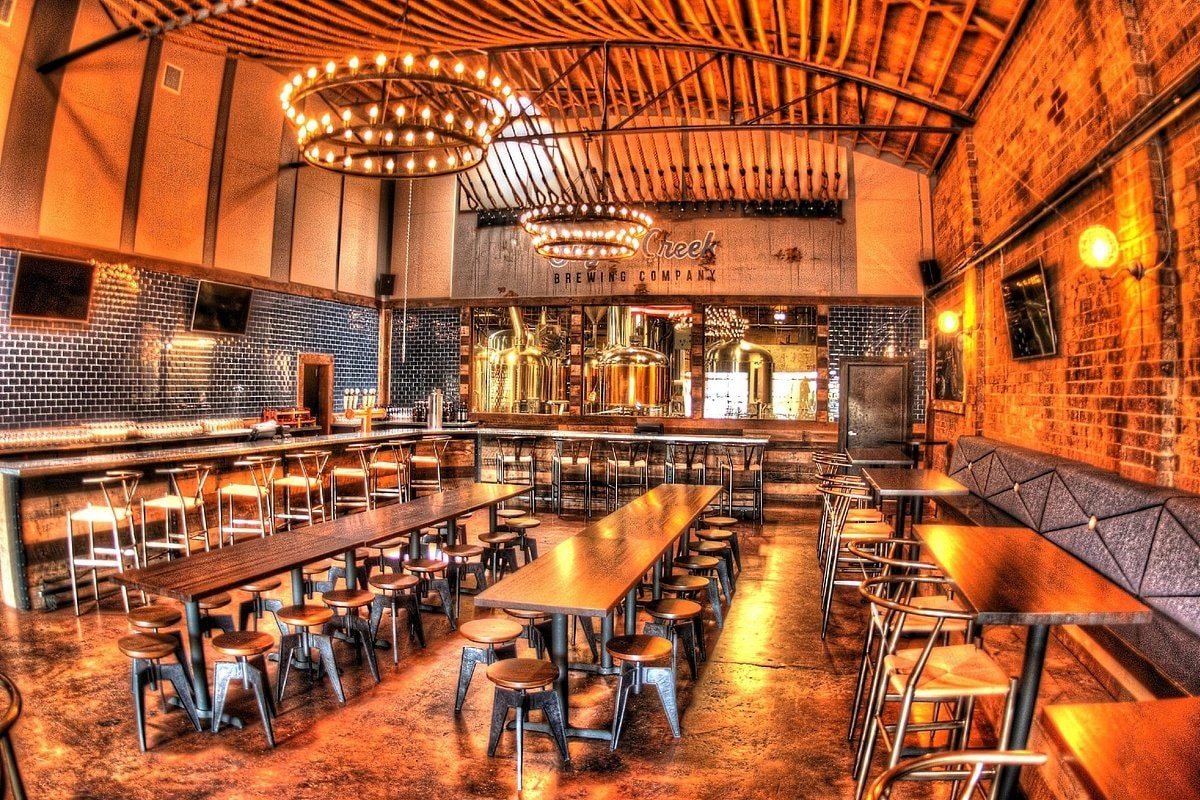
Designing The Brewery: Crafting The Perfect Space For Exceptional Beer
In the world of beer where science meets art, brewery design is the canvas on which each unique flavor profile and brewing story unfolds. From the layout vision to the details of equipment placement, every aspect helps define the flavor symphony of exceptional beer. This article is your passport into the world of brewery design, as we explore the nuances of creating a space that not only brews exceptional beer but also invites enthusiasts into an immersive and welcoming atmosphere. From conceiving your vision to mastering the art of efficient space utilization, join us to uncover the secrets behind the perfect brewery design where every sip is a celebration of craftsmanship and creativity. Cheers to the art of brewing and the spaces that make it extraordinary!
Complete Guide
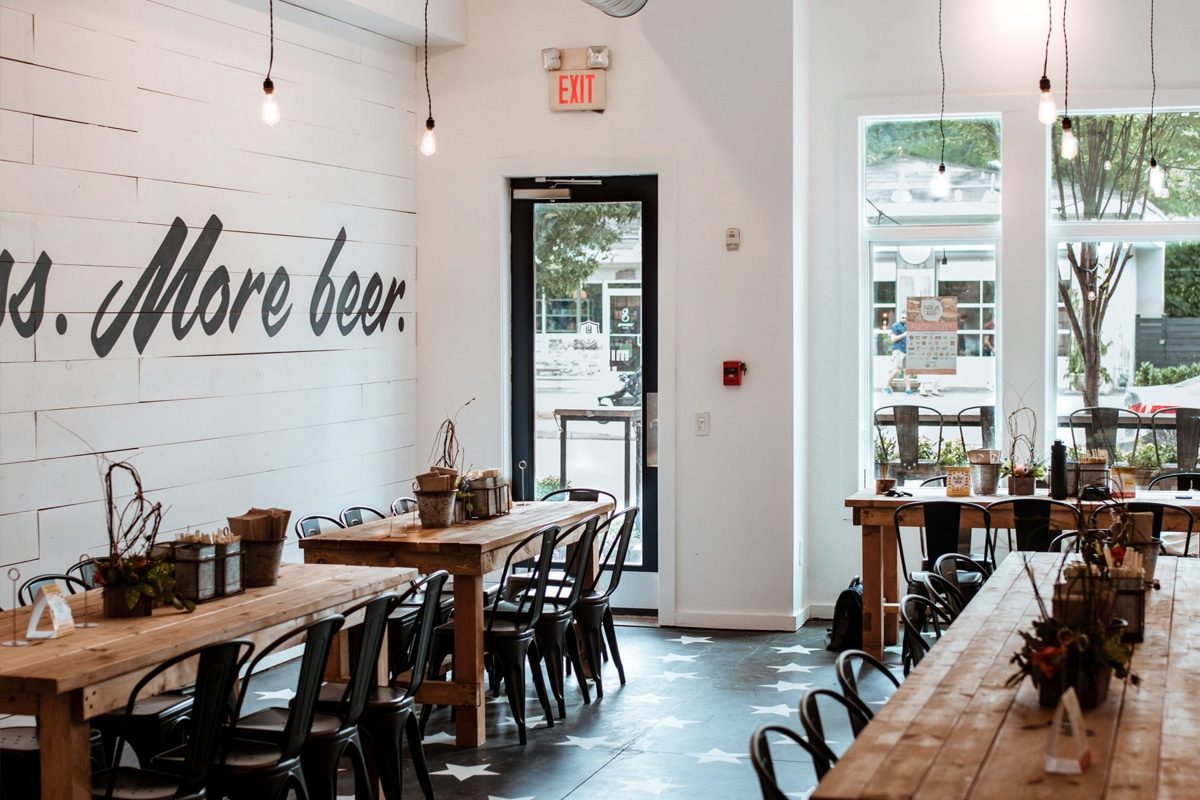
Define Your Brewery Concept
Your brewery concept is the core of your entire endeavor, guiding every decision and detail as you embark on your journey to design your beer sanctuary. It’s not just a vision, it’s the soul of your brewery. Here’s how to clarify and refine your concept:
Clear Concept
Define your brand identity and the experience you want to deliver. Is it a comfortable public atmosphere, industrial fashion aesthetics, or a fusion of tradition and modernity? Your concept is the compass that guides design decisions, from the layout of your brewing equipment to the atmosphere of your bar.
Target Audience
Think about your target audience, are you catering to beer connoisseurs, locals looking for a casual hangout, or a wider market? Tailor your concept to resonate with your ideal customers, ensuring a seamless blend between your brewery’s identity and your target market’s preferences.
Brewery Size
The scale of your brewing ambitions will greatly influence your concept. A compact microbrewery may prioritize a personal touch, while a larger production facility emphasizes efficiency. Know the scale that aligns with your vision and resources.
Signature Beer
Your concept should reflect the type of beer you plan to produce. Do you focus on traditional beers, experimental beers, or a variety of styles? Align your concept with signature flavors to define your brewery’s reputation.
Native Integration
Consider how your brewery concept will fit into the local community. Is your goal to be a community hub, source local ingredients, and partner with neighboring businesses? Aligning your concept with the community adds depth and authenticity to your brewery’s narrative.
Adaptability
While concrete concepts are crucial, leave room for adaptability. The craft beer landscape is constantly evolving, and your concept should be flexible enough to incorporate emerging trends without compromising the brewery’s core identity.
Defining the brewery concept is a fundamental step in the design process. It is the soul of the brewery, influencing everything from aesthetics to functionality. With a clear concept, you can delve into detailed design decisions that will transform your brewery into a unique and thriving beer destination.
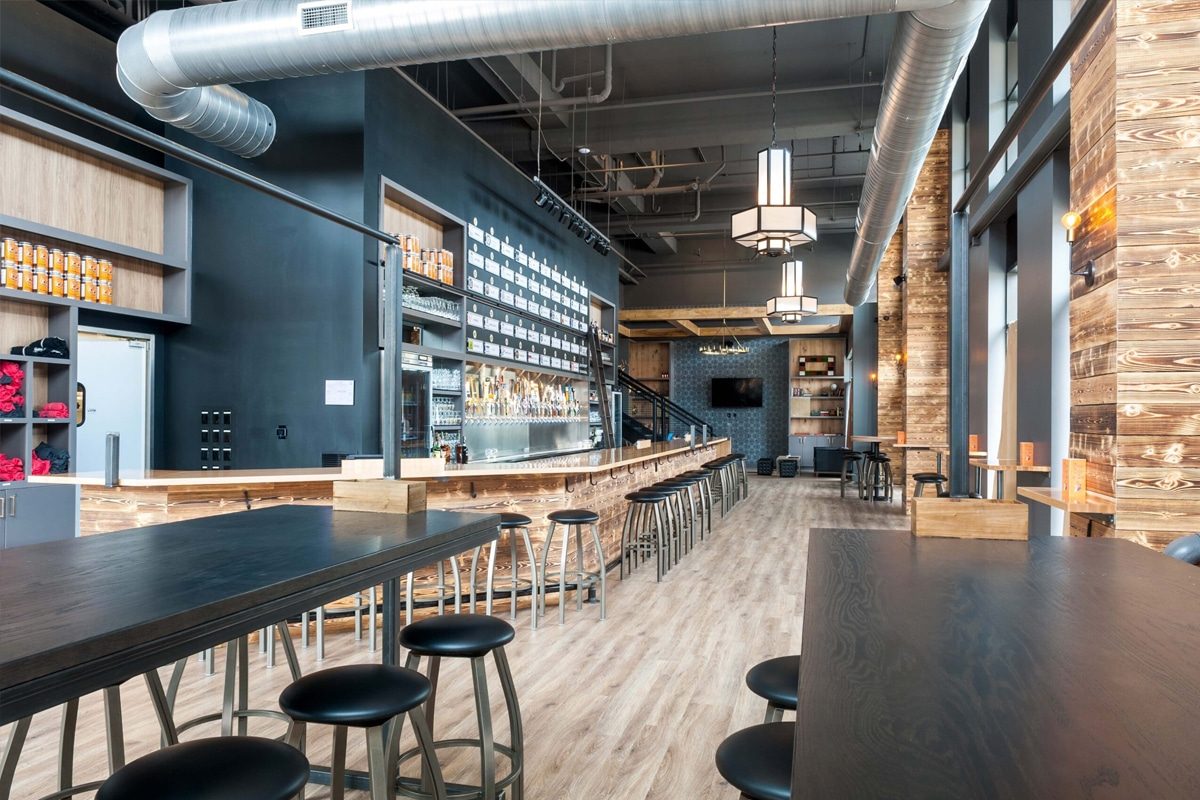
Spatial Planning
Space planning is the architectural backbone of a brewery, intricately connecting every aspect of the brewing process. By strategically dividing and organizing your brewing space, you can not only optimize efficiency but also create a seamless flow that enhances the overall brewing experience. Here’s how to master the art of brewery space planning:
Functional Division
Classify your brewery into functional areas. Allocate specific areas for the brewery, fermentation, packaging, and any other components such as taproom or retail space. Allocate space according to the specific needs of each area, optimizing workflow and minimizing unnecessary movement.
Optimize Workflow Layout
Map the brewing process from start to finish. Think about the entire journey an ingredient takes from raw material to finished product. Arrange equipment and workstations to minimize unnecessary movement and promote smooth workflow. This not only increases productivity but also reduces the risk of errors during the brewing process.
Adaptability To Flexibility
Design your space with adaptability in mind. As trends evolve and consumer preferences change, flexible spaces allow you to adapt without major adjustments. This flexibility is key to staying relevant in the dynamic world of craft beer.
Security And Accessibility
Prioritize safety measures by ensuring roads are clear, signage is correct and emergency exits are accessible. Ensure safety practices and regulations are followed while making the space accessible to all, including people with disabilities.
Spatial Flow of Employees And Customers
Consider comfort and ease of movement for employees and customers. Thoughtful circulation of the space helps create a harmonious atmosphere, creating a positive experience for all who interact with the brewery.
Optimal Device Placement
Strategically position brewing equipment to maximize efficiency. Consider factors such as proximity to utilities, maintenance access space, and workflow optimization. Thoughtful equipment layout can increase productivity and minimize downtime.
Warehousing And Inventory Management
Allocate adequate space for raw materials, finished products, and packaging materials. Implement efficient storage solutions to stay organized and accessible, reduce clutter, and simplify inventory management.
Consider Utilities And Infrastructure
Consider utility connections such as water, electricity, and gas. Make sure they are strategically located to support brewing equipment and processes. Incorporate energy-saving solutions to minimize operating costs.
By carefully planning your space, you can lay the foundation for a functional, efficient, and adaptable brewery. Thoughtful space allocation not only increases productivity but also contributes to a seamless brewing process and engaging customer experience.
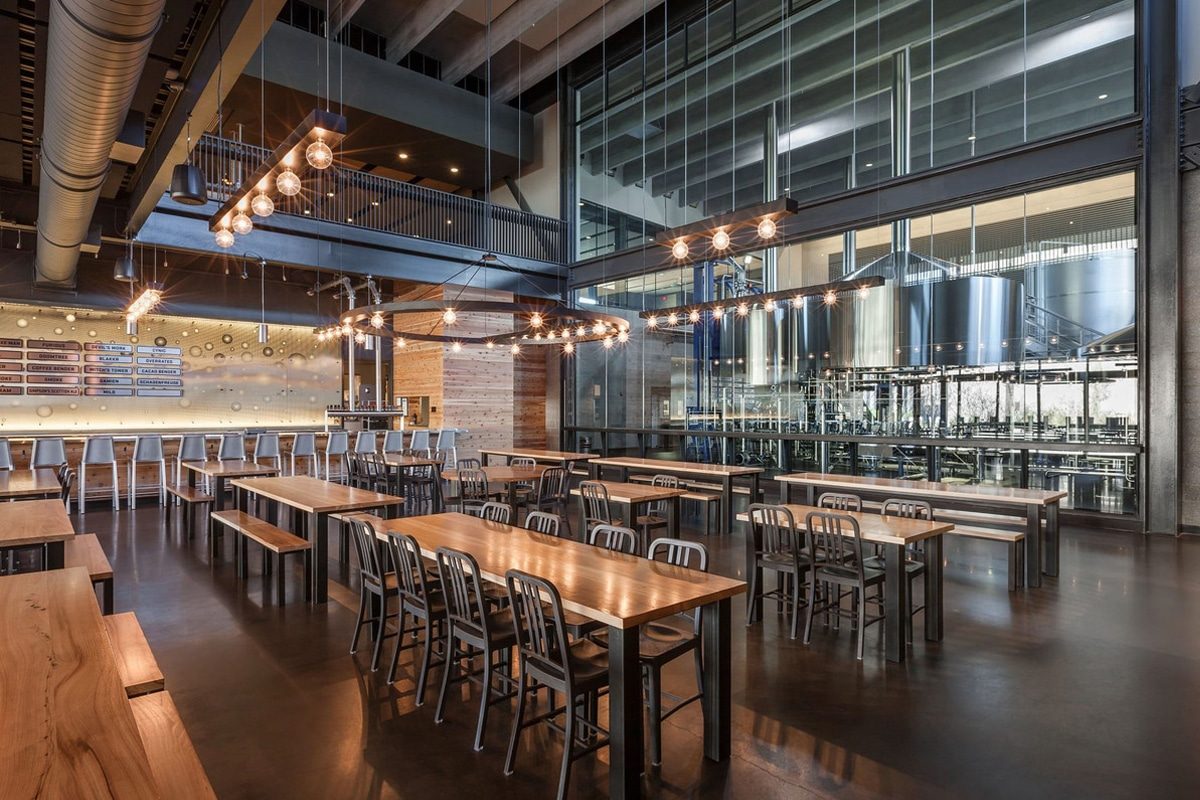
Equipment Selection And Placement
Selecting and placing brewing equipment is like orchestrating a symphony of flavors. From kettles to fermenters, the choices you make here will have a profound impact on the quality and efficiency of your beer production. Let’s delve into the art of equipment selection and placement:
Consider Production Scale
Assess the size of your brewing operation. Small breweries, brewpubs, and large production facilities have unique needs. Choose equipment that matches your required production capacity, taking into account current needs and future growth.
Focus on Brewing Process Efficiency
Each piece of equipment plays a vital role in the brewing process. From the mash tun to the fermentation tank, efficiency and functionality are prioritized. Choose equipment that streamlines your brewing workflow and optimizes every step of the production process.
Quality Not Quantity
Invest in high-quality brewing equipment that meets your specific brewing needs. Consider factors such as material quality, production capabilities, automated features, and overall durability. Quality equipment often comes with the benefits of consistency and longevity.
Fermentation Area
Allocate space for fermentation vessels considering factors such as size, quantity, and temperature control requirements. Optimize layout for easy access during routine cleaning and maintenance.
Packaging And Storage
Plan a dedicated area for packaging equipment, such as bottling or canning lines, kegging systems, and labeling machines. Ensure there is sufficient space to store packaged products while maintaining accessibility for loading and unloading.
Workflow Optimized Placement
Strategically place brewing equipment to enhance workflow. Consider the natural progression of the brewing stages to ensure the process is logical and efficient. Minimize unnecessary movement and ensure ease of maintenance and cleaning.
Maintenance Convenience
Place equipment in a location where maintenance is easy. Leave enough clearance around each machine to allow for routine maintenance, repairs, and potential upgrades without interrupting the brewing process.
Consider Future Expansion
Design your brewery with future growth in mind. Select equipment and plan its placement to easily expand or add new brewing capabilities. This foresight saves your brewery from having to make major structural changes as it grows.
Ergonomics And Safety
Equipment placement prioritizes ergonomics and safety. Designed to minimize lifting, strain, and potentially hazardous workflows. Implement safety measures such as guards, sensors, and emergency shutdown mechanisms.
By carefully selecting and strategically placing your brewing equipment, you not only lay the foundation for efficient production but also create an environment where the art of brewing flourishes, ensuring consistency and quality in every batch of beer produced.
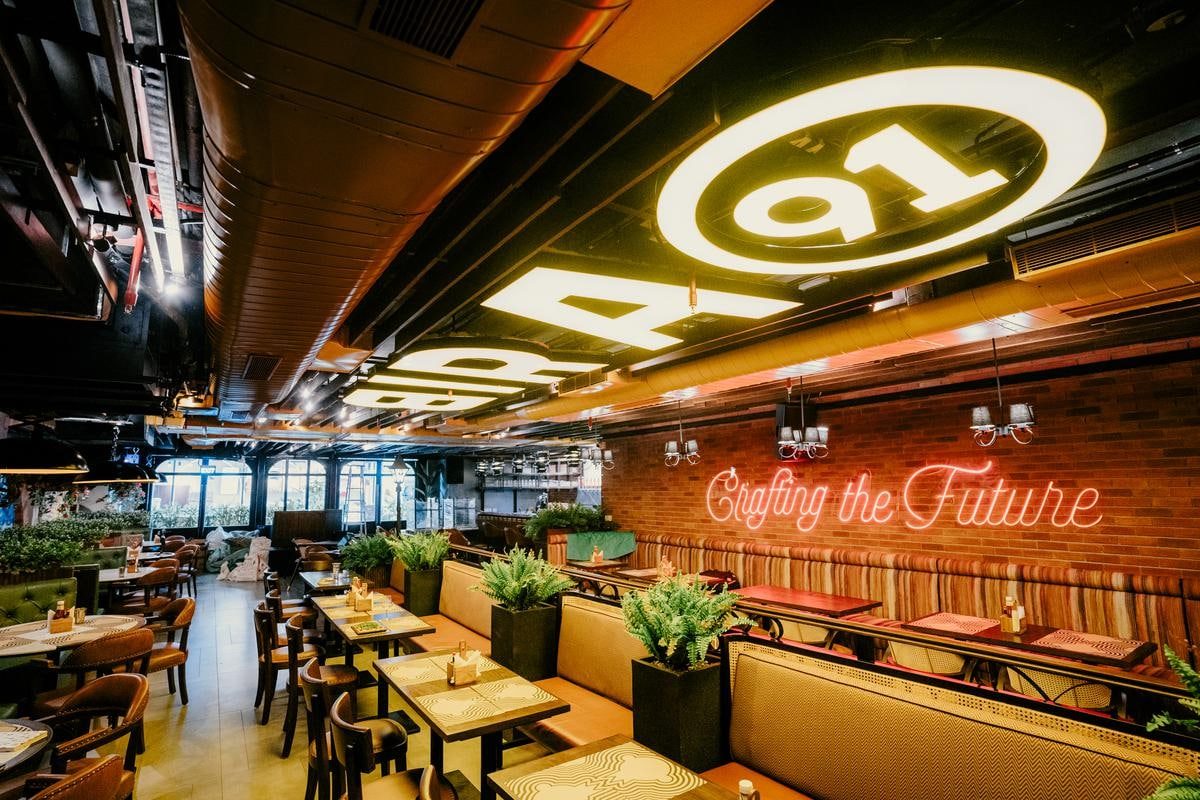
Utilities And Infrastructure
In the world of brewery design, the unseen heroes are the utilities and infrastructure that power the brewing process. From the steady flow of water to the hum of electricity and the hiss of gas, every element plays a vital role. Here’s a comprehensive guide to understanding the intricacies of brewery utilities and infrastructure:
Brewing Water
Water quality is critical in the brewing process and affects the taste and consistency of your beer. Ensure access to reliable, high-quality water sources. If necessary, consider filtration systems and water treatment. Plan to provide adequate hot and cold water to different brewery areas.
Electrical Requirements
Evaluate electrical requirements for brewing equipment and auxiliary systems. Ensure proper electrical connections, adequate voltage, and sufficient amperage to meet the brewery’s electrical needs. Make sure electrical outlets are strategically placed to minimize the use of extension cords, thereby reducing potential safety hazards. Consider backup power solutions to protect against outages.
Gas Connection
For breweries that use natural gas for heating or other processes, plan for safe and efficient natural gas connections. Consider safety measures such as leak detection systems and proper ventilation to guard against potential risks.
Energy Saving Solutions
Explore energy-saving technologies that minimize environmental impact and reduce operating costs. This includes LED lighting, energy-efficient HVAC systems, and appliances with built-in energy-saving features. Sustainable practices not only benefit the planet but also help save costs in the long term.
Temperature Control Infrastructure
Brewing often requires precise temperature control. Design infrastructure to accommodate heating and cooling systems to ensure a stable fermentation and storage environment. Consider insulation to minimize energy loss and maintain consistent temperatures.
Drainage And Waste Management
Develop a comprehensive waste management plan for liquid and solid waste. Proper drainage, wastewater treatment, and recycling initiatives contribute to sustainable brewery operations. In this regard, compliance with environmental regulations is crucial.
Utility And Device Integration
Coordinate closely with equipment vendors to seamlessly integrate utilities with brewing equipment. This collaboration ensures that the layout optimally supports the operational needs of each machine, minimizing energy losses and streamlining processes.
Backup Systems And Redundancy
Where feasible, plan for emergencies by incorporating backup systems and redundancy. This includes backup generators, emergency water, and utility outage contingency plans. Redundancy ensures that critical processes continue in the face of unforeseen challenges.
Compliance And Regulations
Understand local utility and infrastructure regulations and compliance requirements. Work with a professional who is familiar with brewery-specific guidelines to avoid legal issues and ensure the safety of your brewery operations.
Future-Proof Your Brewery
Think ahead when designing your brewery’s utilities and infrastructure. Consider how future expansion or changes in technology may affect your utility needs. Flexible design to accommodate growth and emerging industry trends.
With careful planning and implementation of utilities and infrastructure, you can build a solid foundation for your brewing business. Well-designed infrastructure not only supports the brewing process but also provides the foundation for sustainable, efficient brewery operations.
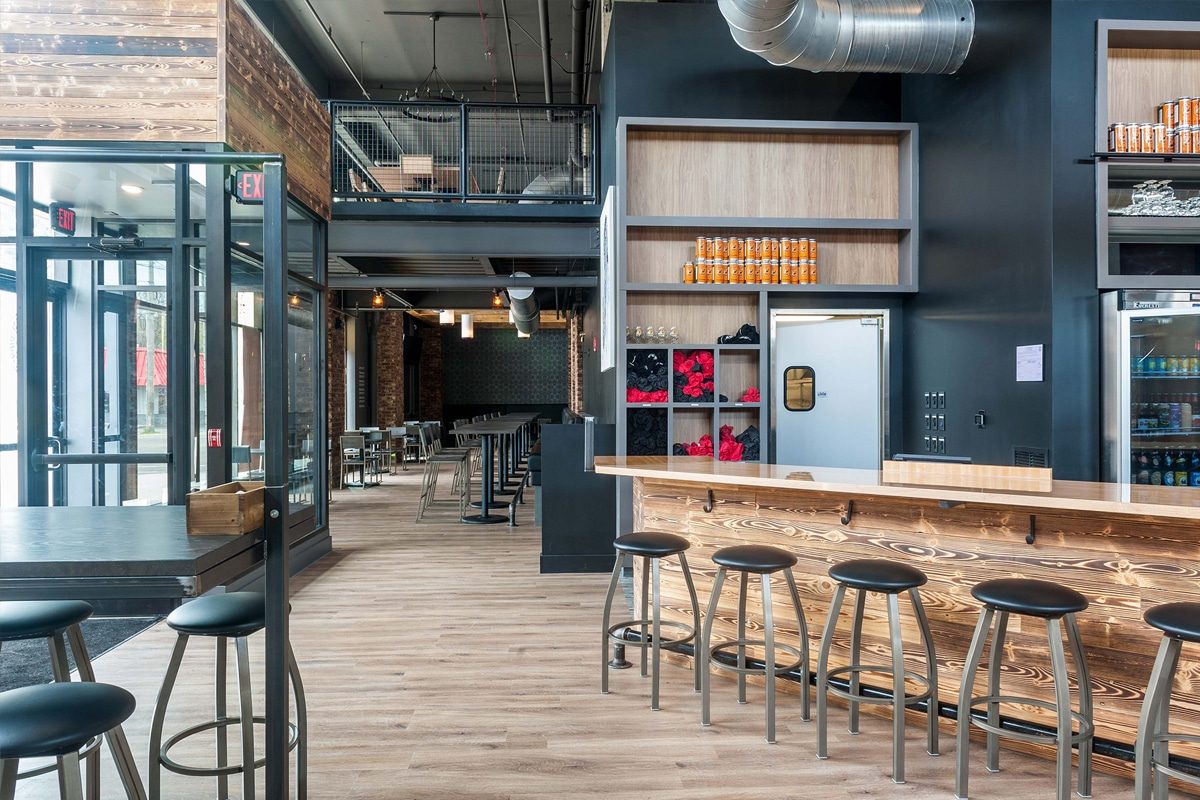
Ventilation And Climate Control
Maintaining proper ventilation and climate control within a brewery helps ensure a comfortable and safe working environment as well as maintaining the quality of the beer produced. Here’s a closer look at ventilation and climate control considerations in brewery design:
Steam And Odor Management
An efficient ventilation system helps manage the steam, odors, and air particles produced during the brewing process. Install ventilation hoods and exhaust systems in brewing areas to remove excess moisture and volatile compounds, ensuring clear visibility and a safer working environment.
Air Quality
Maintaining good air quality is critical to both the brewer and the beer itself. Consider using an air filtration system to remove impurities and maintain air quality within your brewery. Filtration helps reduce airborne contaminants that can affect the brewing environment and the taste and quality of the final product.
Temperature And Humidity Adjustment
Precisely control temperature and humidity levels throughout the brewery. Consistent conditions help the fermentation and conditioning stages of brewing run smoothly. Install an HVAC system or specialized climate controls to achieve and maintain optimal conditions.
Security Measures
Implement safety measures in ventilation and climate control systems to prevent hazards such as heat build-up, gas leaks, or the spread of contaminants. Regular maintenance and monitoring help maintain a safe production environment.
Heat Insulation
Ensure proper insulation to minimize heat transfer and maintain a stable temperature in the brewing area. Insulation prevents energy loss, especially in hot or cold climates, helping to increase energy efficiency and save costs.
Energy Efficiency
Incorporate energy-saving solutions to minimize operating costs. Implementing smart HVAC systems, using well-insulated walls, and optimizing natural ventilation layouts can help create a more sustainable and cost-effective brewery.
Regular Maintenance
Develop a routine maintenance schedule for your ventilation and climate control systems. Regular inspections and cleaning will ensure it continues to be efficient, prevent potential problems, and extend the life of your equipment.
Brewery Layout Considerations
Consider ventilation when planning your brewery layout. Make sure there is proper air circulation in the brewing area and a well-placed exhaust system to effectively remove heat and smoke.
Comply With Regulations
Make sure your brewery’s ventilation and climate control systems comply with local codes and safety standards. This may include obtaining the necessary licenses and certifications to operate within specified guidelines.
By incorporating effective ventilation and climate control into your brewery design, you not only create a safer, more comfortable environment for your brewery, but you also help improve the consistency and quality of the beer you produce. A well-controlled atmosphere is the secret to brewing great beer.
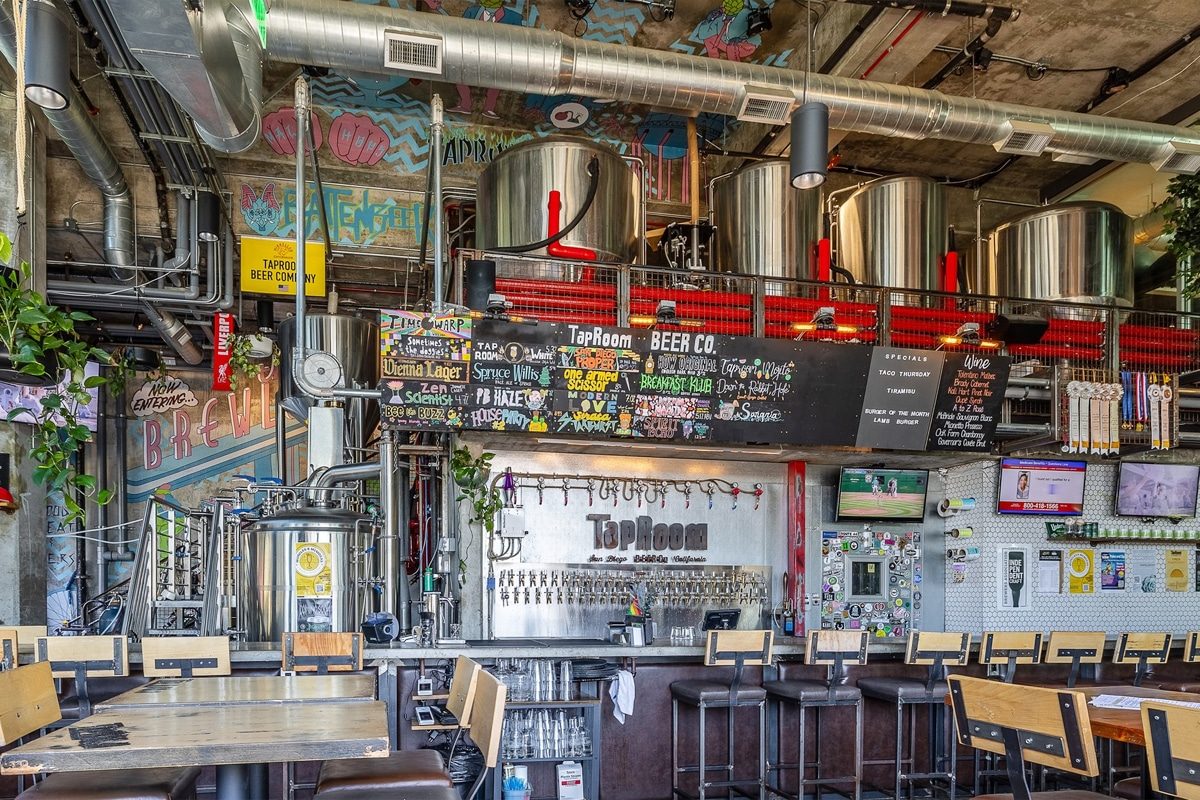
Safety Precautions
Designing a brewery is not just about brewing great beer, it’s about creating a safe and secure environment for everyone involved. Here is a comprehensive guide to incorporating safety considerations into your brewery design:
Emergency Exit And Evacuation Plan
Prioritize safety by placing emergency exits strategically throughout the brewery. Ensure evacuation routes are clear and marked, and conduct regular drills to familiarize employees with evacuation procedures.
Fire Extinguishing System
Install effective fire suppression systems, such as sprinklers and fire extinguishers, in key areas of the brewery. Use fire-resistant materials when necessary and comply with fire safety codes and regulations. Regularly inspect and maintain these systems to ensure they function properly during an emergency.
Employee Training
Invest in a comprehensive safety training program for brewery employees. Covers topics such as equipment operation, emergency response procedures, and proper use of safety equipment. Well-informed employees are the first line of defense against potential risks.
Safety Signs
Display safety signage throughout the brewery, including hazard warnings, emergency contact information, and instructions for using safety equipment. Proper signage can increase awareness and facilitate a quick, organized response in an emergency.
Personal Protective Equipment (PPE)
The use of appropriate personal protective equipment including safety glasses, gloves, and hearing protection is mandatory when necessary. Provide easy access to personal protective equipment and make its use mandatory at all related brewery activities.
Ongoing Safety Culture
Develop a culture of safety within your brewery. Encourage open communication about security issues, hold regular security meetings, and continually evaluate and improve security protocols based on feedback and experience.
Regular Safety Inspections
Develop a routine schedule for safety inspections covering equipment, storage areas, and all parts of the brewery. Promptly identify and address potential hazards to maintain a safe work environment.
Chemical Handling And Storage
Implement appropriate protocols for handling, storage, and disposal of chemicals used in the brewing process. Clearly label all chemicals, provide adequate ventilation, and train employees on safe handling procedures.
Follow Building Codes
Make sure to comply with local building codes and safety regulations. Work closely with architects and construction professionals who are well-versed in your brewery’s specific requirements to avoid potential legal and safety issues.
Security Measures
Consider security measures such as surveillance cameras, access control systems, and alarm systems to protect the safety of the brewery’s physical assets and on-site personnel.
By prioritizing safety in your brewery design, you not only create a safe work environment but also demonstrate a commitment to the well-being of your team and visitors. Safety is not just a regulatory requirement, it is a fundamental aspect of creating a sustainable and successful brewery.
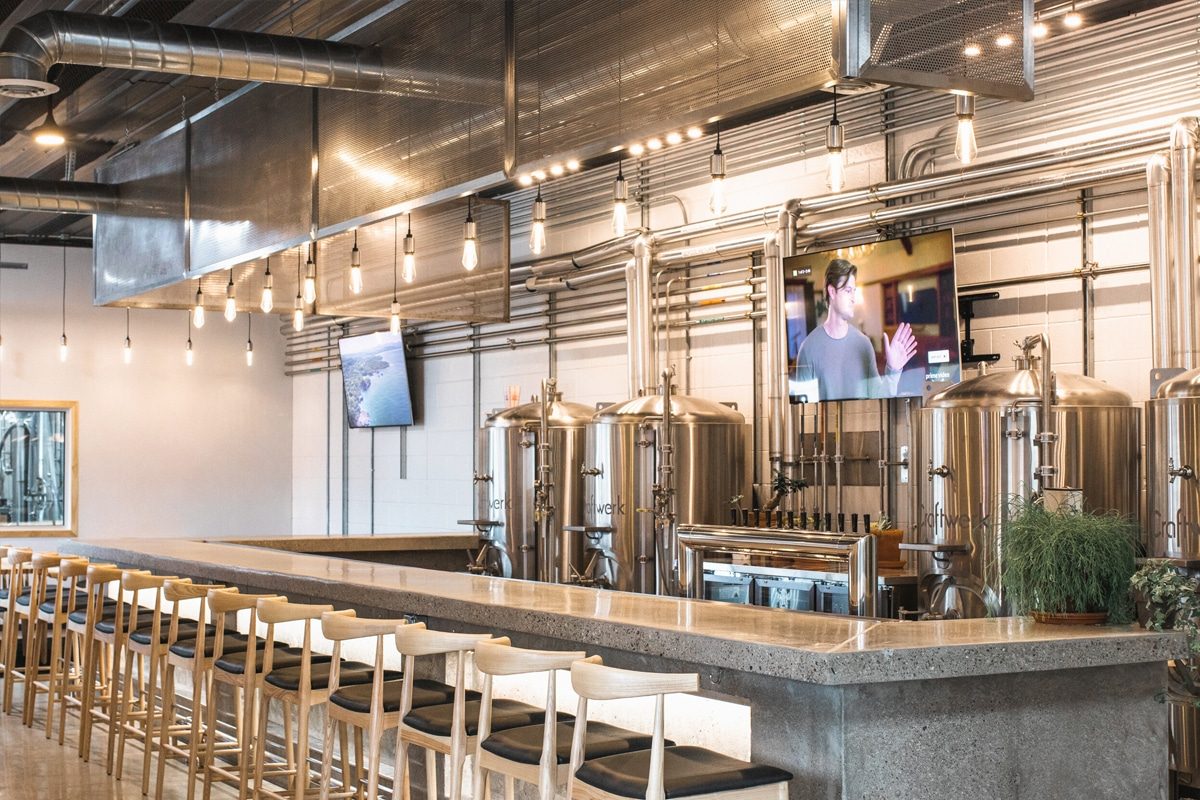
Brewery Aesthetics
A brewery’s aesthetics are more than just visual appeal, they shape the experience for both brewers and customers. Designing a brewery that captivates with its atmosphere requires a careful blend of creativity and functionality. Let’s dive into the key elements of brewery aesthetics:
Theme And Style
Choose a theme or design concept that aligns with your brand image and resonates with your target audience. Whether it’s rustic, industrial, contemporary, or a fusion of styles, let your brewery’s aesthetic narrative reflect your brand story.
Architectural Design And Layout
Incorporate architectural elements that complement your chosen theme. From exposed brick walls to sleek stainless steel surfaces, every aspect of the brewery design should create a cohesive and visually striking atmosphere.
Material Selection
The materials chosen should not only reflect your chosen theme but also be able to withstand the harsh environment of a brewery. Consider stainless steel for the brewing area, warm woods for taproom furniture, and durable and easy-to-clean surfaces to balance beauty with functionality.
Lighting Design
Lighting can greatly affect the atmosphere of a brewery. Combine ambient, task, and accent lighting to highlight brewing equipment, create cozy nooks, and enhance the overall ambiance. Natural light is also a valuable asset, if possible.
Brand Elements
Incorporate the brewery’s branding into the aesthetic. Incorporate logos, color schemes, and other brand elements into signage, glassware, and even the brewery’s overall color palette to create a cohesive and memorable brand experience.
Open And Transparent
Consider an open design so customers can witness the brewing process. Install large windows or glass partitions to provide glimpses into the brewery, enhance transparency, and connect customers to the craft.
Art Display
Utilize wall space to display artwork related to the brewery, whether it’s historic brewing equipment, beer-related artwork, or even a mural that tells the brewery’s story. Art displays contribute to the overall aesthetic and provide points of interest.
Furniture And Seating Arrangements
Make sure the layout and seating arrangements complement the aesthetics of the brewery while maximizing functionality. Create cozy nooks, communal areas, and spaces that encourage social interaction while allowing customers to observe the brewing process.
Landscaping And Outdoor Spaces
If applicable, extend your brewery aesthetic into your outdoor space. Landscaping, patio areas, and a beer garden enhance the overall experience. Consider greenery, comfortable seating, and outdoor lighting to create an inviting extension to your brewery.
Spatial Uniformity
Maintain a sense of unity in different areas of the brewery. Whether it’s a brewery, Taproom, or outdoor space, a consistent aesthetic theme creates a seamless, harmonious experience for visitors.
Rebranding Flexibility
While a cohesive aesthetic is crucial, allows flexibility to adapt to changing trends or rebranding efforts. Choose elements that can be easily updated or replaced to keep your brewery’s look fresh and relevant.
By carefully curating your brewery’s aesthetic, you can create an immersive and captivating environment. This not only complements your brand, but also enhances your customers’ overall brewery experience, inviting them to taste not just the beer, but the atmosphere itself.
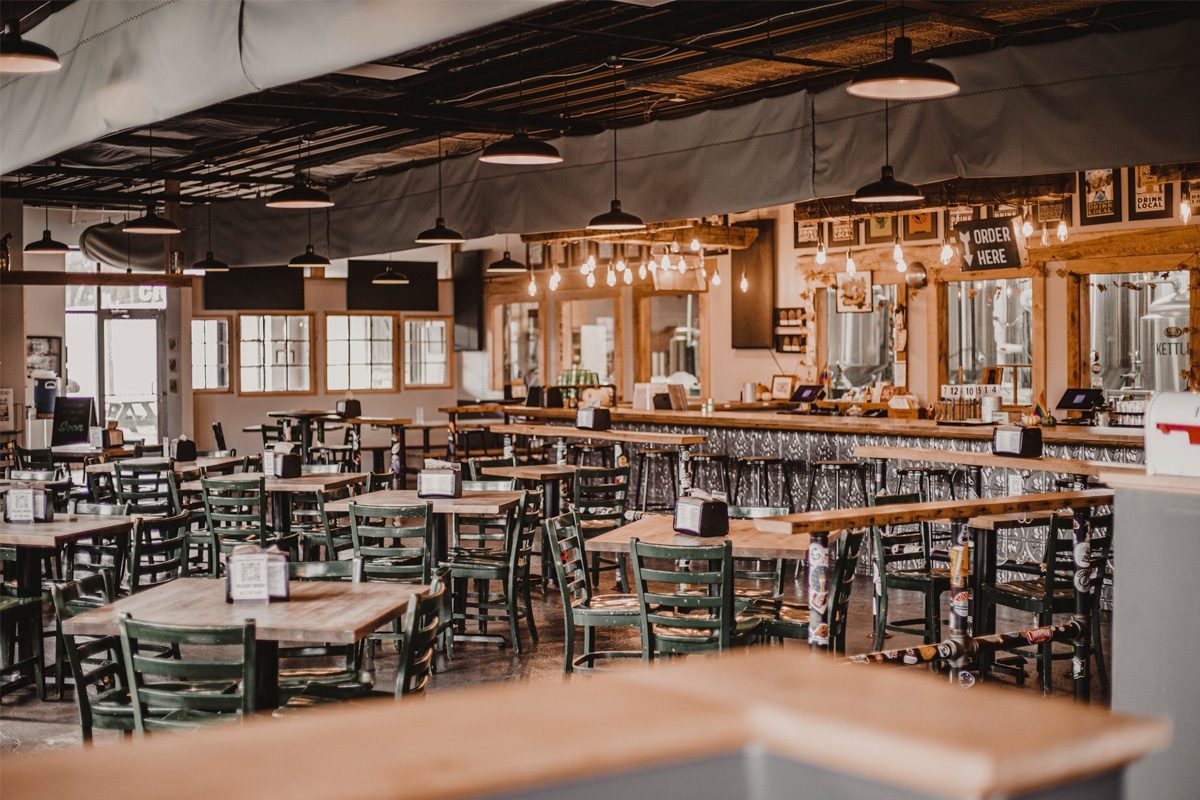
Summarize
The brewery is designed like a symphony, where every element harmonizes to create an immersive experience. From initial conceptualization to careful planning of space, equipment, and security, every step plays a vital role in creating the perfect brewery. It’s a combination of functionality and creativity, where aesthetics and practicality dance together. The brewery becomes the canvas where flavors, textures, and stories come together. As breweries breathe life into grains and hops, the taproom provides a stage to share the stories carefully crafted in every glass poured. With every detail considered, may your brewery not only produce great beer, but also become a welcoming sanctuary for passion, innovation, and community. It’s the artistry of brewery design and the delightful experience it makes for. Cheers to crafting not just beer, but a culture of appreciation and camaraderie!
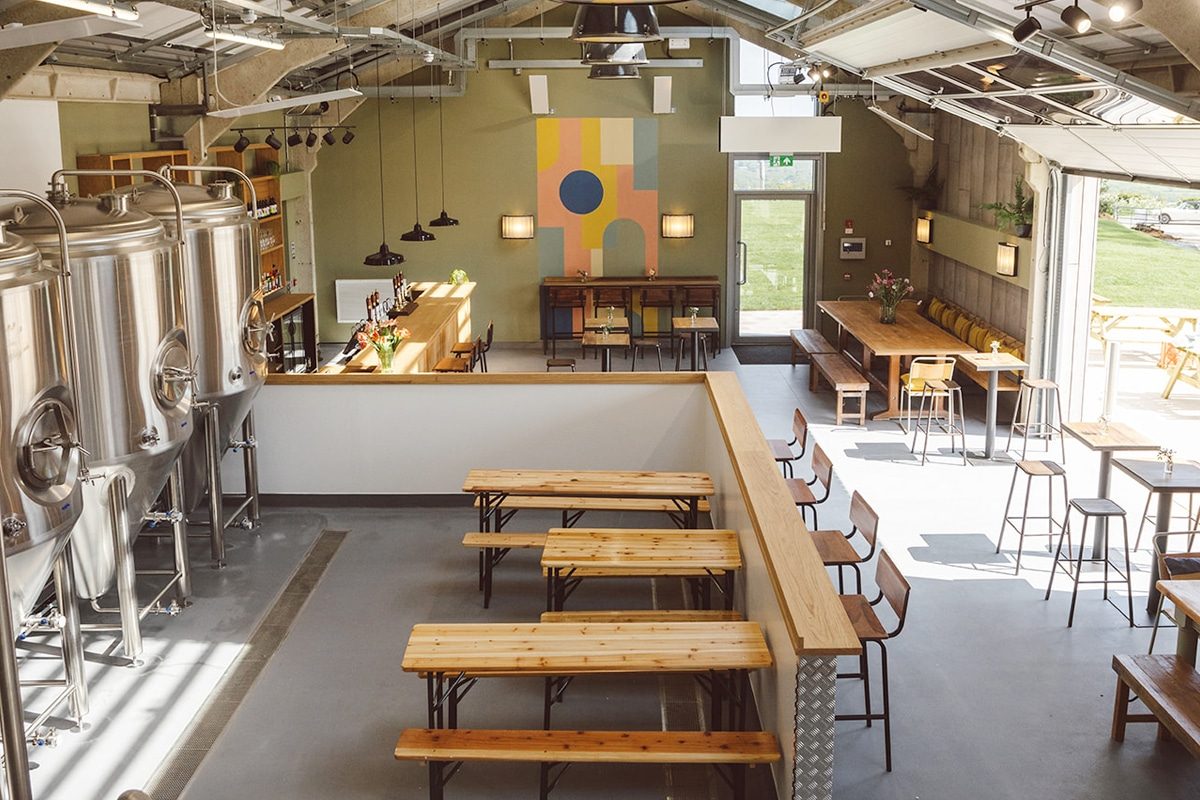
Your Bespoke Brewery Design Partner
At ZYB Craft, we’re passionate about crafting not just exceptional beer but also tailor-made brewery solutions that echo your unique vision. Our expertise lies in offering complete turnkey solutions meticulously tailored to meet your specific needs. Whether you’re a budding entrepreneur stepping into the world of brewing or an established brewery seeking expansion, our comprehensive services cover every aspect of brewery design.
From conceptualization to execution, our dedicated team specializes in creating spaces that blend functionality with creativity. We understand that every brewery is distinct, and our commitment is to bring your aspirations to life. Contact ZYB Craft today for a personalized consultation, and let’s embark together on the journey of designing a brewery that encapsulates your essence. Your bespoke brewery solution awaits, reach out to us, and let’s craft excellence together!



